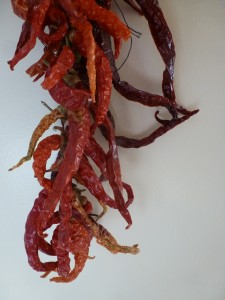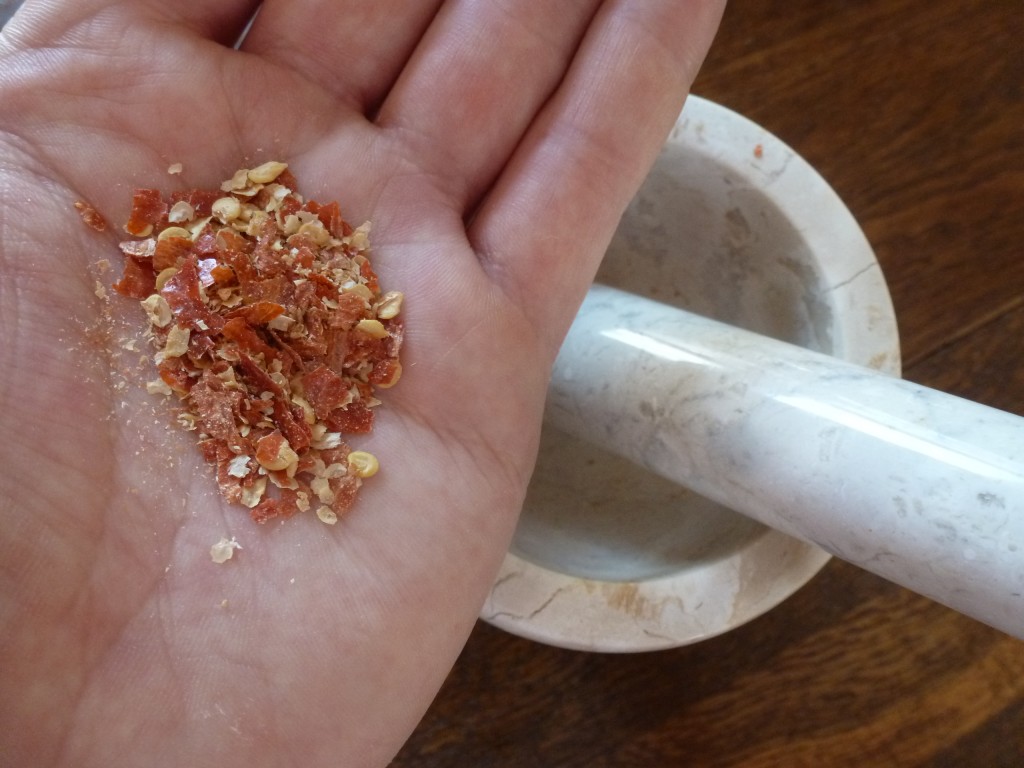 We didn’t eat spicy food when I was growing up. Not at all.
We didn’t eat spicy food when I was growing up. Not at all.
I didn’t learn to appreciate spicy food until I was in my early twenties, and it was at an Italian restaurant, of all places. I patronized Mercato in Calgary throughout high school, then later I had the opportunity to work in their kitchen. They make food from all over Italy, but the owners are Calabrian, and there’s always a few pastas on the menu made by infusing olive oil with garlic and hot chili flakes. I remember the first time that I realized how effective a little heat can be. It wakes up your mouth, and it elongates the sensation of the dish, as your mouth is warm well after you’ve swallowed the pasta.
Lisa and I now use chili flakes on noodles, in grilled chicken marinades, and on pizza. In fact we use so many that we started drying our own peppers.
At the end of the growing season the greenhouses at farmers’ markets often have fantastic sales to get rid of the last of their produce. Lots peppers can be got on the cheap: the only problem is using them up before they go bad.
It turns out that peppers dry very, very easily in Edmonton, especially hot varieties, which are selectively bred to have thin skins. At first we just strung the fresh peppers together using dental floss (makes sure it’s not flavoured with mint…) and hung them in the kitchen. This completely passive method worked about two out of every three times, but every now and then we found that the peppers would mold slightly on the inside, at the top were the stem, flesh, and placenta meet. (The placenta is the name of the whitish membrane than holds all the seeds…) Since then we’ve been jump-starting the drying process in a low oven for a few hours.
The skin becomes paper thin and brittle, and when held to the light you can actually see the shadows of the seeds. It’s a simple preserving method that requires almost no work and keeps us in peppery heat all winter long.
You can blitz the whole peppers in a spice grinder, but to get something resembling commercial chili flakes, use a mortar and pestle that will pulverize the brittle flesh while keeping the seeds intact. If you use a spice grinder you can open the peppers and remove the seeds before busting up the dry flesh, then reincorporate the seeds before sprinkling the flakes onto your food.
